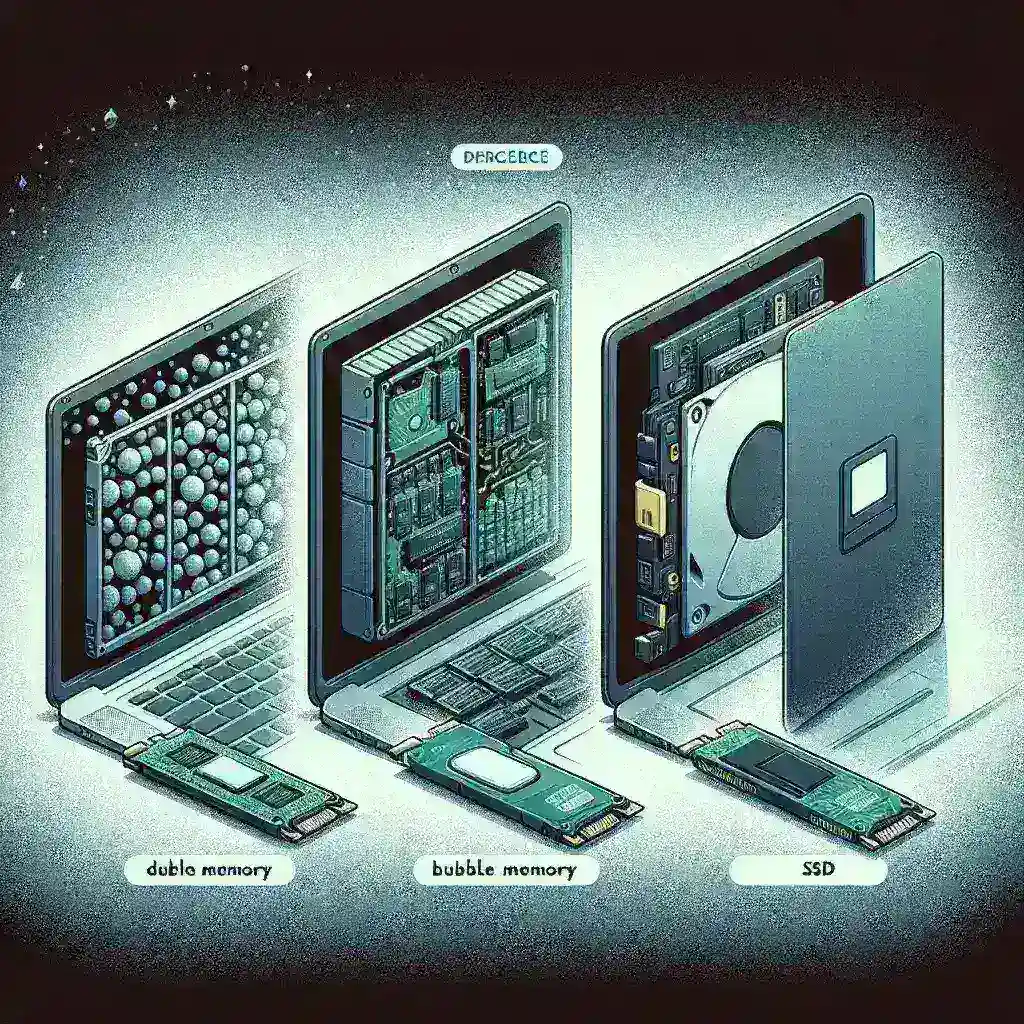Introduction
The world of data storage has undergone a remarkable evolution over the past few decades, transforming not only how we store information but also influencing the performance and capabilities of our computing devices. One of the most significant transitions in this evolution has been from bubble memory to solid-state drives (SSD) in laptops. This article delves into that journey, highlighting key milestones, technological advancements, and the implications for users today.
The Era of Bubble Memory
Bubble memory, a technology developed in the 1970s, was one of the early attempts at creating a non-volatile storage solution. Unlike traditional magnetic disk drives, bubble memory uses a thin film of magnetic material to store data in the form of tiny “bubbles.” These bubbles can be manipulated electrically, allowing for data retrieval without the need for moving parts.
How Bubble Memory Works
- Structure: Bubble memory consists of a thin film of magnetic material, typically ferrite, where bits are stored in the form of magnetic “bubbles”.
- Data Access: The data stored in these bubbles can be accessed by moving them along the film using magnetic fields.
- Non-Volatility: Unlike RAM, bubble memory retains its data even when the power is turned off, making it a reliable storage solution.
Pros and Cons of Bubble Memory
While bubble memory offered several advantages, it was not without limitations:
- Pros:
- Non-volatile storage, ensuring data retention without power.
- Low power consumption compared to traditional magnetic drives.
- Durability due to the lack of moving parts.
- Cons:
- Slower access times compared to contemporary storage solutions.
- Complex manufacturing processes that limited mass production.
The Rise of Hard Disk Drives (HDD)
With the limitations of bubble memory, the 1980s saw the rise of hard disk drives (HDD). These drives utilized magnetic disks to store data and became the predominant storage technology for personal computers.
HDD Technology Overview
- Magnetic Disks: Data is stored on spinning platters coated with magnetic material.
- Read/Write Heads: These heads move across the platters to read or write data.
Advantages of HDD
- Cost-Effectiveness: HDDs offered higher storage capacities at lower prices compared to bubble memory.
- Established Technology: The technology matured quickly, leading to widespread adoption in PCs.
Limitations of HDD
- Moving Parts: The mechanical nature of HDDs made them susceptible to physical damage.
- Speed: Slower data access times compared to modern storage technologies.
The Advent of Solid-State Drives (SSD)
The transition to solid-state drives in the early 2000s marked a revolutionary shift in the storage landscape. SSDs utilize flash memory, which allows for faster data access and increased reliability.
Understanding SSD Technology
- Flash Memory: SSDs store data in NAND flash memory chips, which have no moving parts.
- Speed: SSDs provide significantly faster read and write speeds compared to HDDs.
- Durability: The absence of mechanical components increases resilience against shocks and drops.
Benefits of SSD
- Performance: SSDs drastically reduce boot times and application load speeds.
- Energy Efficiency: They consume less power, enhancing battery life in laptops.
- Compact Size: SSDs allow for thinner and lighter laptop designs.
Comparative Analysis: Bubble Memory vs. SSD
To understand the full impact of this evolution, let’s compare bubble memory and SSDs across several dimensions:
- Speed: SSDs outperform bubble memory and HDDs in speed.
- Capacity: Modern SSDs can reach multi-terabyte capacities, far exceeding what bubble memory could offer.
- Durability: SSDs are more durable due to the lack of moving parts.
- Cost: While SSD prices have decreased, they still typically cost more per gigabyte compared to HDDs.
The Future of Storage Technology
As we look ahead, the evolution of storage technology continues to progress. Innovations such as 3D NAND technology are enhancing SSD capacities and performance. Furthermore, emerging technologies like cloud storage solutions and quantum computing promise to redefine how we store and access data.
Predictions for Future Storage Solutions
- Increased Capacities: Expect SSDs with greater storage capacities and faster speeds.
- Integration with AI: Future storage solutions may incorporate AI for better data management and retrieval.
- Enhanced Security: As data breaches become more prevalent, security features in storage devices will become increasingly sophisticated.
Conclusion
The journey from bubble memory to SSDs showcases the remarkable advancements in data storage technology. As laptops and other devices continue to evolve, the impact of these storage solutions on performance, reliability, and user experience cannot be overstated. Understanding this evolution not only highlights the significance of technological progress but also sets the stage for exciting developments in the future.

